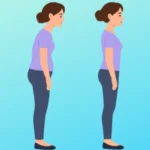Understanding Hip Stiffness: Why It Happens, What It Means, and How to Fix It
If you work with humans—athletes, weekend warriors, office workers, or gym newcomers—you already know one universal truth: tight hips are everywhere. It doesn’t matter whether someone is squatting heavy, running marathons, or sitting at a desk all day—hip stiffness is one of the most common issues affecting performance, comfort, and movement quality.
And the worst part? Most people accept tight hips as if they’re an unavoidable fact of life.
In reality, hip mobility is trainable, adaptable, and hugely responsive to the right kind of work. That’s why this video tutorial with elite Strength & Conditioning Coach Mike McGurn is such a powerful tool. His routine blends traction, strengthening, dynamic flow, and tissue release—exactly what most bodies are missing.
But before diving into “how to fix it,” it helps to understand the hip’s anatomy, biomechanics, and why stiffness shows up in the first place.
Let’s break it down in a way that’s useful for therapists, trainers, and rehab professionals who want the full picture.
Why the Hips Matter So Much
The hip isn’t just a joint—it’s a force-transfer station. Every step, squat, jump, lunge, and hinge requires the hips to coordinate power between the upper and lower body. When the hips move well:
When the hips stiffen up, everything else compensates. And those compensations—especially at the lumbar spine and knees—are where pain, overuse injuries, and chronic irritations often begin.
A Quick Tour of the Hip: Anatomy that Matters
The hip is a ball-and-socket joint designed for a wide arc of motion. The important players include:
The Joint Itself
The femoral head sits inside the acetabulum, creating a deeply stable socket. That depth provides power and protection, but also means mobility must be maintained intentionally—it doesn’t “stay” mobile by default.
The Hip Flexors
Including iliopsoas, rectus femoris, and sartorius. These often become shortened from sitting or overused through repetitive training.
The Glutes
Gluteus maximus, medius, and minimus drive hip extension, rotation, and stability. Weak or inhibited glutes are one of the biggest contributors to perceived hip tightness.
The Adductors
A massively underrated group. They contribute to stability, power, and control, but become stiff when the hip lacks rotational freedom.
The Deep Rotators
Piriformis, gemelli, obturators. Essential for rotational control. When they’re tight, rotation becomes restricted.
The Capsule & Ligaments
Often overlooked. Joint capsule stiffness can limit rotation and flexion even if the muscles themselves feel “fine.”
This is why hip stiffness rarely has one single cause. It’s usually a blend.
Why Hips Get Tight in the First Place
Here’s where movement professionals have a significant advantage: we understand that tightness is rarely just a muscle problem. Hip stiffness usually develops because the system as a whole is overloaded or under-stimulated in specific ways.
1. Too Much Sitting, Too Little Extension
Prolonged sitting keeps the hip in flexion. Over time, the body adapts to that position. The hip flexors shorten, the glutes shut down, and the pelvis tilts forward. The result? A hip that resists extension.
2. High Training Volume Without Mobility Balance
Athletes who sprint, squat, lift, or cycle often develop stiffness simply because the tissues are working hard without adequate recovery or joint nourishment.
3. Poor Pelvic Control
If the pelvis can’t stabilise, the hips stiffen reflexively to compensate. This is particularly common in runners and lifters who hinge poorly.
4. Insufficient Rotational Training
Most gym routines heavily emphasise sagittal-plane movement. Without rotation, the deep hip rotators become stiff and guarded.
5. Weak Glutes and Core
When stability isn’t available, the hip recruits stiffness as a “safety strategy.”
6. Joint Capsule Restriction
This is especially relevant for therapists. When the capsule is stiff, mobility drills feel ineffective until traction or mobilisation is introduced—exactly why Mike’s banded traction work is so useful.
The Biomechanics of a Stiff Hip
A tight hip doesn’t just feel restricted—it changes how the entire body moves.
Here’s what often happens:
-
The hip loses extension → stride shortens → lumbar spine begins to overextend
-
External rotation becomes limited → knee tracks poorly → foot collapses
-
Flexion becomes tight → squat depth suffers → pelvis tucks early
-
Rotation is restricted → athletes compensate with lumbar rotation
Viewed this way, hip stiffness isn’t just discomfort—it’s a biomechanical bottleneck.
Why Mobility Work Must Blend Strength + Release + Traction
This is where Mike McGurn’s routine shines. He doesn’t treat hip mobility as a stretching exercise. He treats it as a full system upgrade, using several categories of stimulus:
Joint Traction
Banded traction creates space in the hip joint so tissues can glide. This is essential when the capsule is restricted.
Strengthening the Hip Flexors
A tight hip flexor is often a weak hip flexor. Strength restores balance.
Dynamic Hip Flow
Movement patterns like leg swings, 90/90 transitions, and quad-reach flows train the hips in multiple planes.
Glute Activation
Stronger glutes equal freer hip extension.
Fascial Movement
Combining reach, rotation, and flowing transitions hydrates connective tissue and restores elastic recoil.
This is what makes his sequence powerful—it addresses the hip globally, not locally.
Clients Who Benefit Most from Hip Mobility Work
Honestly? Pretty much everyone. But therapists and coaches will see the biggest improvements in:
-
Runners with short stride length or recurrent shin/knee issues
-
Lifters who struggle with depth or hip pinching
-
Athletes with poor rotation or tight adductors
-
Desk-bound clients with anterior hip stiffness
-
Field-sport athletes who need hip resilience for cutting and sprinting
-
Anyone with “mysterious” low back tightness—often a hip problem in disguise
How to Use This Hip Mobility Routine in Practice
Here’s a simple framework:
For athletes:
Use it as part of a warm-up or mobility day to maintain healthy hip function.
For rehab professionals:
Use traction and flow patterns after manual therapy to reinforce new range.
For general fitness clients:
Use it as a daily movement snack to counteract sitting and improve posture.
The magic is not in performing the exercises once—it’s in repeating them frequently enough for the brain and body to adopt the new movement as “normal.”
Final Thoughts: Freedom at the Hips Means Freedom in Movement
Hip stiffness isn’t a life sentence. It’s a signal that the system wants more variety, more strength, and more space. When you combine joint traction, strengthening, dynamic flow, and glute activation—just as Mike demonstrates—you restore not only mobility but confidence in how the hips move.
Whether you’re a manual therapist looking to reinforce treatment, a rehab professional designing programs, or a coach trying to get better results for your athletes, improving hip mobility is one of the fastest ways to upgrade movement, reduce injury risk, and boost performance.
And the best part?
The hips respond quickly when you give them the right input.









